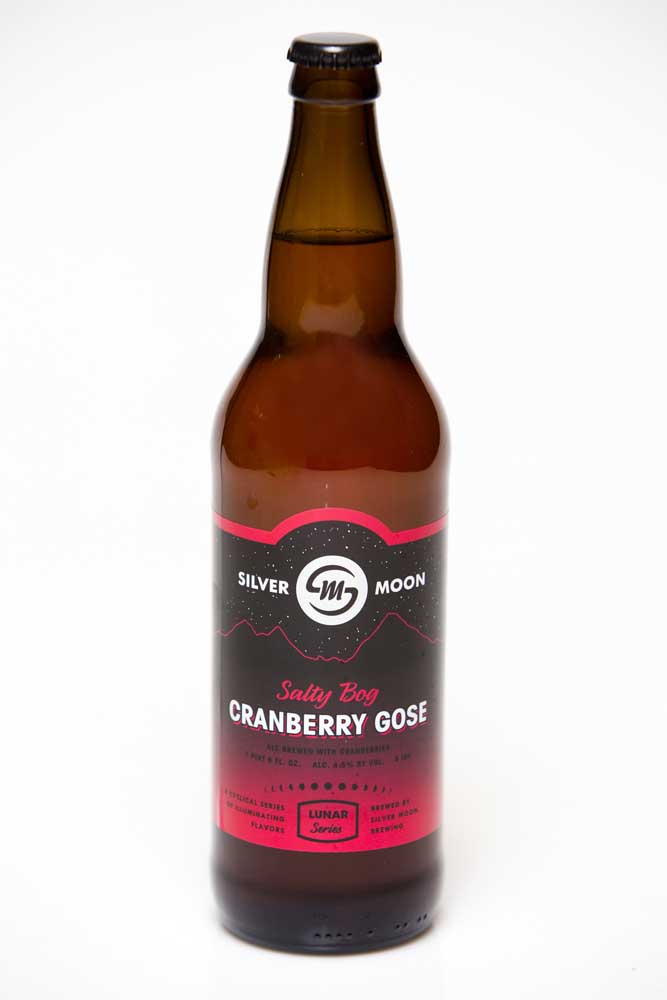Bend brewers go for the gose
Published 11:56 am Thursday, July 20, 2017

- Silver Moon Brewing offers Salty Bog Cranberry. (Andy Tullis/Bulletin photo)
American brewers love resurrecting extinct or obscure beer styles and making them their own. Often these recreations remain niche styles enjoyed only by a few, with names such as sahti and Grätzer. Occasionally, one of these historic styles captures the imagination of the craft beer drinker and explodes in relative popularity. Berliner weisse, the tart German wheat style that forms the base of many popular sour ales, is a great example. And a close relative is also on the rise: gose.
Pronounced “goes-uh,” the style is a light and sessionable sour German wheat beer, with a twist: It’s seasoned with coriander and salt. To the casual beer drinker, this combination can sound off-putting, particularly in a sour ale. In practice, the result is generally a crisp light ale with a lactic tartness similar to yogurt, and a fairly mild saltiness, if detected at all. Think of a lime margarita with the salted rim of the glass for an idea of how well tart plus salt can work together.
Trending
A number of Central Oregon breweries have dabbled in the gose style in recent years, including Deschutes Brewery and Worthy Brewing Co. Silver Moon Brewing is the latest to embrace it, recently releasing the region’s first packaged gose as their latest seasonal, Salty Bog Cranberry Gose.
Silver Moon’s head brewer Jeff Schauland is a fan of the style.
“I actually really do like goses if they are made the ‘proper’ way,” he said via email. “We first made Spa Day last June. It was a cucumber and lemon gose that was kind of inspired by the cucumber and lemon water you find at day spas.” On the inspiration for the current release, he said, “One of our brewers worked in a cranberry bog in a former life. He came up with the name Salty Bog because of the salt used in goses and cranberries were just the obvious fruit to use at that point.”
The traditional method of souring a beer with lactic acid is to pitch lactobacillus bacteria into the fermenter to develop the lactic acid, and pitch a standard brewing yeast to complete the fermentation. This process takes time, and additionally runs the risk of contaminating the rest of the brewery with the acidifying bacteria.
An alternative method is to allow the mash (the grains) to sour before drawing off the wort for the boil.
In this instance, lactobacillus bacteria present on the grains steeps in the warm water for up to three days to promote lactic acid development.
Trending
Many American brewers employ a process similar to this latter example known as kettle souring, in which the wort is allowed to develop lactic character pre-boil. Schauland explains: “The brewer will mash and lauter just as one normally would.
Then, when the kettle is as full as the brewer wants it, a souring agent (usually a lactobacillus culture or plain old nonfat yogurt) is mixed with the wort and left to sit for usually 12 to 72 hours.
That time allows the bacteria to produce acid and lower the wort pH. When the wort hits the brewer’s desired sourness it is boiled to kill off all of the bacteria, then it is fermented as usual.
The main differences between a Berliner weisse and a gose are the salt and coriander, perceived acidity, and fruity character — Berliner weisse beers are more sharply tart, while goses tend to be mellower and exhibit some fruit-like notes, some of which comes from the coriander.
And often, as in the case of Salty Bog, actual fruit supplements the finished ale as well. With cranberries, Silver Moon’s offering pours with a clear, twilight pink color, not unlike a rosé wine. Aromatically, there is a light note of brine underlying the delicate fruit with a bit of yogurt-like tartness thrown in for good measure. It’s easy to drink, crisp and refreshing, with savory subtle flavors all around, and a Thanksgiving cranberry sauce impression at the back.
Anderson Valley Brewing Company from California brews four goses, all of which are available in cans. Their “base” gose, named The Kimmie, The Yink, & The Holy Gose, is a great starting point to learn about the style.
As for Salty Bog, Schauland is a fan.
“I feel like it has a nice balance of sourness, cranberry, and a touch of that salty brine,” he said. “It’s definitely a beer for a warm summer day, and I hope folks will give it a try.”
—Jon Abernathy is a Bend beer blogger and brew aficionado.
Try this beer







